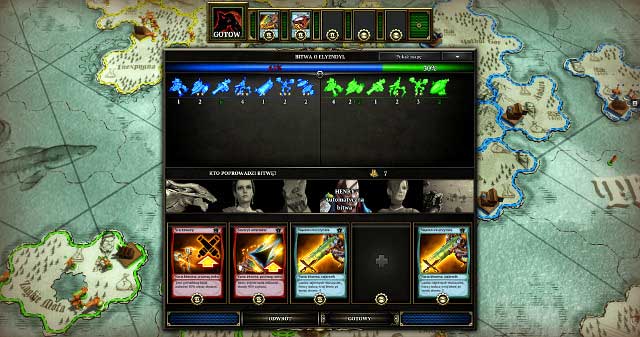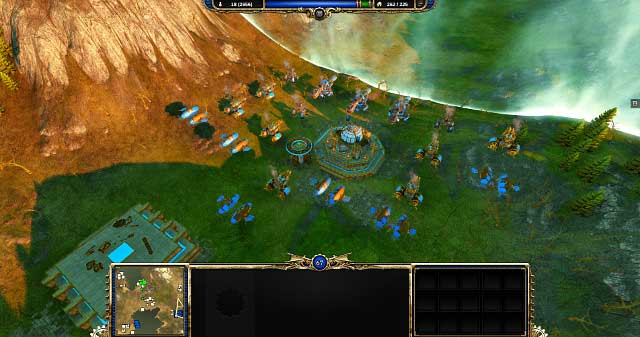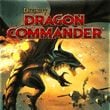Divinity Dragon Commander: Basics Combat Phase
The combat phase is the part of the game that will cause the most problems to players. On the other hand, this is the part that will be enjoyed by the RTS fans most. The overall rules have not changed, in comparison with the other games of this genre. Still, there are a few differences. Before a direct battle is fought, all of the sides to the conflict need to make preparations.

At this point, you will decide if you want to fight the battle alone, if any of the generals should take the command, or the army should remain without its commander. A general and the dragon can only be used once a turn, the remaining battles, if any, will have to be fought without a commander. That is why, if in a given turn, you expect 3 or more battles, it is very important to make a careful selection of the staff. In other words, the army will do well if only it outnumbers the enemy. If the situation is bad - a commander may be your only solution. It is good to know that the game does not impose on you the necessity to fight a battle and the whole game can be completed with automatic battles only.
The bar above signifies the percentage chances of victory in a given skirmish. Apart from the number of soldiers, and their upgrades, the chances for victory are also influenced by generals (e.g. Henry shown in the above screenshot, thanks to his skills, gives more chances for victory than the others), as well as by your popularity among races, buildings (remember that each country surrounded by allied countries has higher and higher buildings with each turn. The condition of buildings in the countries bordering with the enemy will deteriorate on a regular basis) and the selection of cards. There are five slots into which put the cards. The first three are visible and two last slots will be invisible for the enemy. Of course, you should make your selection in such a way, as to strengthen your units as much as possible. In the case of the automatic battle, there is no point in using a card that improves on the grenadiers' shooting speed, if there are no grenadiers in your army. Such a card will be most useful in a regular battle, because it will bolster all of the grenadiers that you create in the RTS mode. It is best to put the most crucial cards into the invisible slots, which can surprise the unsuspecting enemy, and which would scare him into retreat if he saw these in the visible slots.
With the automatic battle, each single percent point is of significance. Nonetheless, it is still trusting the fate blindly and, even in the case of an 80%-20% advantage, theoretically, the chances of losing are still high. What remains is the matter of loses which, even in the event of victory during the automatic battle may prove to have adverse effect on your campaign, and which you could not suffer if you played yourself. The choice is up to you. If you are good playing RTS games, fighting the battles yourself is probably going to be a better option. On the other hand, these are quick and demanding clashes which will bring more harm to players that are not that experienced. You should also remember that you can change the pace of the gameplay, during battles, if it is too high for you.

The basic deviation from the norm in the RTS part of the Dragon Commander is the absence of typical builders that you have seen in the other games. The buildings build themselves but, you can erect them in specific areas of the map (the white patches of land on the minimap). You first need to seize such a region by keeping your ground units next to it, and then, build a building of a given type. If the building has already been built, in order to take over the foundation, you need to demolish the structure and raise your own. You can use troopers, with their special ability Spoils of War, which allows you to take over the enemy buildings. This will save you time an money.
Apart from the building system, the rest of the gameplay is nothing out of the ordinary. With passage of time, you gain support points (the higher following in the race, on whose grounds you wage war, the more points you get) that perform the function of a resource for which you buy units and build structures. Your objective is to destroy the base (bases) that belongs to the enemy, in order to win a battle. Maps are sometimes very big and the units build very fast and in high numbers. This may result in swarms of soldiers that wander aimlessly around the map who will be difficult to control. That is why you should not hesitate during the battle and strive for completing it as fast as possible. The size of the maps is, at the same time, the greatest trap connected with fighting battles where one side outnumbers the other greatly. In theory, during such battles, the enemy should be quickly pacified with the battle finished. In practice, however, reaching the enemy embankments may take long enough for the enemy to manage to take over the nearby areas, build new bases and new units which will alleviate your advantage in numbers. If you face such a situation, do not forget to send out trace numbers into the side-regions of the map, where there are building sectors, to take over these regions before the enemy does. This will clip the enemy's wings. Assuming that the enemy does not have heavy equipment at his disposal, you should do with two turrets to defend such a strip of land, which you can additionally support with the dragon. On the other hand, if such a situation happens to you, and you are outnumbered, playing cat and mouse, and escaping from the enemy (and attacking the divided units, to the extent it is possible), seizing as many neutral regions as possible, and postponing the final clash to win time to erect as many structures as possible will be the only recipe for success.
What matters in the fights themselves is the speed that you react with. You should not allow the enemy to scatter all around the map like locust. You should, of course, remember about the basic rules like keeping shamans at the backs. Create units which will allow you to control the enemy ''s strategy. Do not forget about the skills of your soldiers. It will be immensely useful if you learn keyboard shortcuts quickly. You will be able to discern it mainly while constructing new units. On big maps, you can go as far as ten (or more) production buildings. Controlling it all manually is a very difficult task. All types of buildings have their own shortcut (by default, these are Z, X, C, V), thanks to which you will be able to mark the buildings of a type all around the map. Remember also about gathering points. Do you want to attack the base in the upper-right corner of the map? Just press Z to select all of the Battle Forges that you have already built and right-click on the area where the enemy base is. From now on, all of the units that you build, all of the newly built units will go where soon the battle will take place. Shortcuts are the key to success, especially if you plan on playing with the dragon often.
Finally, the more buildings, the higher number of these at the beginning of the battle. Also, do not forget that the units that you produce during the battle disappear after it finishes. At the same time, units built in the Risk phase, that will be destroyed during the battle, will disappear from the strategy map.
You are not permitted to copy any image, text or info from this page. This site is not associated with and/or endorsed by the developers and the publishers. All logos and images are copyrighted by their respective owners.
Copyright © 2000 - 2025 Webedia Polska SA for gamepressure.com, unofficial game guides, walkthroughs, secrets, game tips, maps & strategies for top games.
